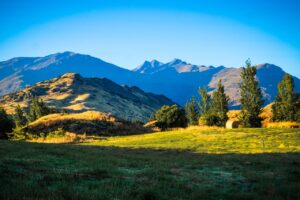England is a land steeped in history and mystery, with its rolling landscapes hiding tales of ancient civilizations, forgotten legends, and enigmatic landmarks. Among these intriguing features are the mysterious sunken roads that crisscross the countryside. These enigmatic pathways, sunken below the level of the surrounding fields, have puzzled historians, archaeologists, and locals alike for centuries. In this article, we will delve into the world of England’s sunken roads, exploring their origins, potential purposes, and the myths that have shrouded them in an aura of fascination.
A Geological Puzzle
Sunken roads, also known as holloways, are unique and distinctive features that evoke a sense of wonder. These deep, narrow tracks often seem as if they were carved into the earth by some ancient force. The truth, however, lies in a complex interplay of natural and human factors. The origins of sunken roads can be traced back to centuries of human activity combined with the erosive power of water, which has sculpted and deepened these pathways over time.
Many sunken roads are believed to have started as mere footpaths or tracks created by early settlers, farmers, and traders. As these paths were repeatedly trodden upon by humans and animals, rainwater began to collect in the ruts, gradually eroding the soil and deepening the grooves. With time, the pathways sunk deeper into the ground, resulting in the sunken roads we see today. This natural erosive process, exacerbated by the region’s frequent rain, has given rise to the unique and captivating features that dot the English landscape.
Historical Significance
Sunken roads hold a wealth of historical significance, serving as silent witnesses to the movements of people, goods, and ideas throughout history. These roads were crucial arteries for trade and travel in centuries gone by. They connected villages, towns, and cities, facilitating the exchange of goods and the spread of culture. The sunken roads’ depth and sheltered nature also provided protection from the elements and potential threats, making them preferred routes for many travelers.
Over time, sunken roads evolved from simple tracks to more defined and engineered pathways. As roads became vital for economic development and social connectivity, they were maintained and improved by local communities, leading to the creation of deeper and more enduring routes.
Myths and Legends
Beyond their historical and geological significance, sunken roads have also inspired myths and legends that add an air of mystique to their allure. Tales of ghostly carriages, phantom travelers, and ancient rituals abound in the regions where these roads are found. The hushed, secluded nature of these pathways, often surrounded by overhanging trees and dense vegetation, has fostered a sense of secrecy and enchantment, fueling imaginative stories that weave the mundane with the supernatural.
Local folklore often attributes the creation of sunken roads to supernatural forces or giants, imbuing them with a sense of otherworldly origin. Such stories reflect the human tendency to ascribe the unknown or unusual to the realm of myth and legend, adding layers of intrigue to these already fascinating features.
Preservation and Conservation
As modern transportation and infrastructure have developed, many sunken roads have fallen into disuse, replaced by wider, paved roads and highways. However, there is a growing recognition of the need to preserve and protect these unique cultural and geological treasures. Organizations and local communities are working together to ensure that sunken roads are not lost to the annals of history. Efforts include maintaining existing pathways, educating the public about their significance, and integrating them into tourism initiatives that allow people to experience their magic firsthand.
England’s sunken roads are more than just geological anomalies; they are a testament to the symbiotic relationship between human activity and the natural world. These pathways, shaped by centuries of footsteps, rain, and time, hold within their depths the stories of generations past. With their air of mystery and historical significance, sunken roads continue to captivate the imagination and inspire curiosity. As we walk in the footsteps of those who came before us, we are reminded that the past is never truly buried—it lives on in the sunken roads that wind through the English countryside.





